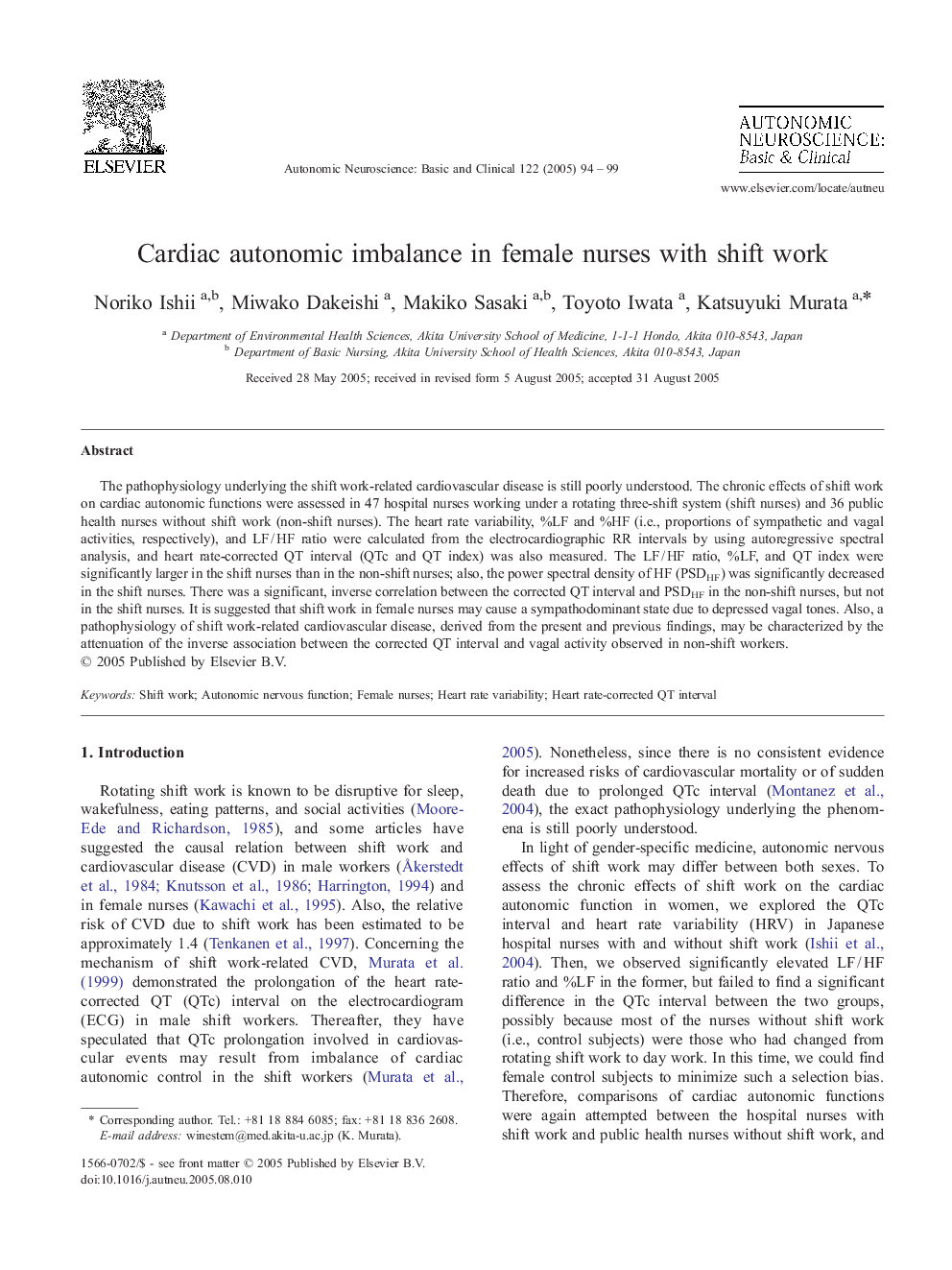| Article ID | Journal | Published Year | Pages | File Type |
|---|---|---|---|---|
| 9186491 | Autonomic Neuroscience | 2005 | 6 Pages |
Abstract
The pathophysiology underlying the shift work-related cardiovascular disease is still poorly understood. The chronic effects of shift work on cardiac autonomic functions were assessed in 47 hospital nurses working under a rotating three-shift system (shift nurses) and 36 public health nurses without shift work (non-shift nurses). The heart rate variability, %LF and %HF (i.e., proportions of sympathetic and vagal activities, respectively), and LFÂ /Â HF ratio were calculated from the electrocardiographic RR intervals by using autoregressive spectral analysis, and heart rate-corrected QT interval (QTc and QT index) was also measured. The LFÂ /Â HF ratio, %LF, and QT index were significantly larger in the shift nurses than in the non-shift nurses; also, the power spectral density of HF (PSDHF) was significantly decreased in the shift nurses. There was a significant, inverse correlation between the corrected QT interval and PSDHF in the non-shift nurses, but not in the shift nurses. It is suggested that shift work in female nurses may cause a sympathodominant state due to depressed vagal tones. Also, a pathophysiology of shift work-related cardiovascular disease, derived from the present and previous findings, may be characterized by the attenuation of the inverse association between the corrected QT interval and vagal activity observed in non-shift workers.
Related Topics
Life Sciences
Neuroscience
Cellular and Molecular Neuroscience
Authors
Noriko Ishii, Miwako Dakeishi, Makiko Sasaki, Toyoto Iwata, Katsuyuki Murata,
